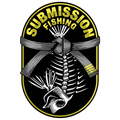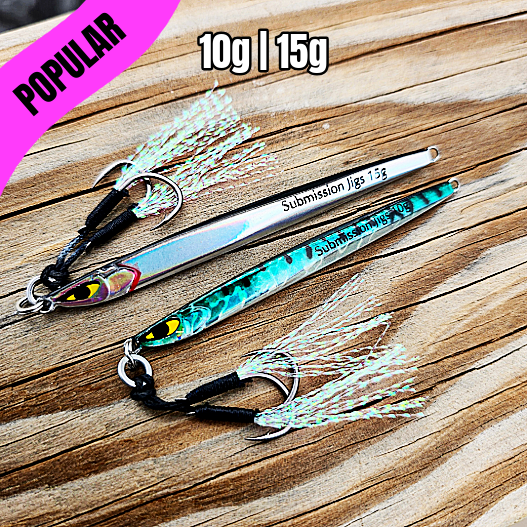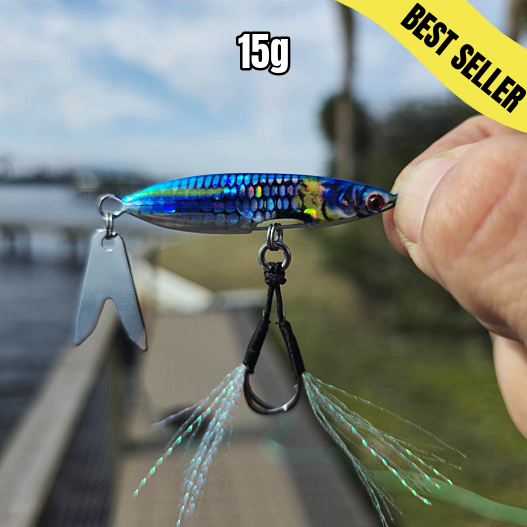How to Choose the Right Jig Weight for Depth and Current (The Simple Formula That Actually Works)
When it comes to slow pitch jigging, nothing matters more than staying vertical.
The second your jig starts dragging off angle, you lose control, lose action—and usually lose the bite.
That’s why the right jig weight is the single most important part of your setup.
It decides whether your lure flutters like a dying baitfish or just tumbles uselessly through the current.
If you’ve ever wondered:
“How heavy should my jig be for this depth?”
…you’re in the right place.
Let’s break it down — no guesswork, no “feel it out” fluff — just the real formula we use on the water from Mission Bay to the Gulf.
🧮 The 1g Per Foot Rule (And When to Break It)
Here’s the golden rule of slow pitch jigging:
Use 1 gram of jig weight per foot of water.
That means:
-
100 feet → 100g jig
-
200 feet → 200g jig
-
400 feet → 400g jig
This simple formula works because slow pitch jigging isn’t about speed — it’s about control.
You’re trying to keep your jig in the strike zone long enough for a predator to see it, study it, and crush it.
Pro Tip: If your line starts to angle more than 15–20°, you’re too light. Go up in weight until you can feel your jig fall straight down.
🌊 Adjusting for Current, Drift, and Line Diameter
Here’s where most anglers go wrong — they forget that current changes everything.
Think of water flow like wind on a kite.
If the current picks up or you’re fishing from a drifting boat, you’ll need to compensate.
Here’s a quick adjustment guide:
| Condition | Weight Adjustment | Example |
|---|---|---|
| Light current (0–0.5 kt) | Standard 1g/ft | 100 ft = 100g jig |
| Moderate current (0.5–1 kt) | +25% | 100 ft = 125g jig |
| Heavy current (1–2 kt) | +50% | 100 ft = 150g jig |
| Fast drift or cross current | +75–100% | 100 ft = 175–200g jig |
Pro Tip: Switch to thinner braid (PE 0.6–1.0) to reduce drag and help your jig fall vertically. Less line resistance = less weight needed.
🪝 Match Your Jig to the Bite, Not Just the Depth
Some days, even the right weight won’t get bit — because the fish aren’t in a chasing mood.
When that happens, swap shape, not just weight.
-
Fast current / aggressive fish: Choose narrow, dense jigs like the Javelin Slow Pitch Jig (100g–200g) for a quick drop and tight flutter.
-
Light current / finicky bite: Go for wide, center-weighted options like the Micro Sumo Jig (10g–15g) that hang in the strike zone longer.
-
Deep water / big fish: Step up to the Samurai Heavyweight Jig (400g–600g) — through-wire tough and built to reach bottom fast.
Each of these designs balances weight, profile, and fall speed differently — and that’s what lets you “match the hatch” and force strikes instead of waiting for luck.
⚙️ Real-World Weight Examples
Let’s run through some real setups from our test trips across U.S. waters:
-
Mission Bay (20–40 ft): 15g–40g Micro Mercenary Jigs and Lightweight Mercenary Jigs — perfect for dock edges and eelgrass.
-
Florida Reefs (80–120 ft): 80g ogre or 100g Javelin Jigs for snapper, amberjack, and grouper.
-
Northeast Structure (200–250 ft): 200g Ogre Middleweight Jigs with double assist hooks.
-
Deep Ocean (400–600 ft): 400g–600g Samurai Jigs for tilefish and tuna.
The point isn’t just to hit bottom — it’s to stay there long enough to get bit.
🧰 Bonus: Adjusting Weight Mid-Trip
The ocean changes hour to hour. Tides shift, wind picks up, and current direction can flip entirely.
That’s why experienced anglers always carry a range of weights.
We recommend building your kit like this:
-
Micros: 10g–20g
-
Middleweights: 60g–200g
-
Heavyweights: 300g–600g
You can grab everything in one place here:
👉 Browse the Full Slow Pitch Jig Collection →
🧠 Final Thoughts
Choosing the right jig weight isn’t about fancy math — it’s about control, feel, and rhythm.
When you stay vertical and your jig flutters naturally, you’re doing everything right.
Remember:
“Make the bite happen.”
If you want to master the full setup — rods, reels, braid, and more — check out our full guide:
👉 Best Slow Pitch Jigging Setup (2025 Guide)
Tight lines,
Muto
Submission Fishing Co.
OSS 🥋
Sign up for our email list and get:
- 🎁 15% off your first order
- 🚀 Early access to new product drops
- 🎥 How-to videos with Mike Muto





